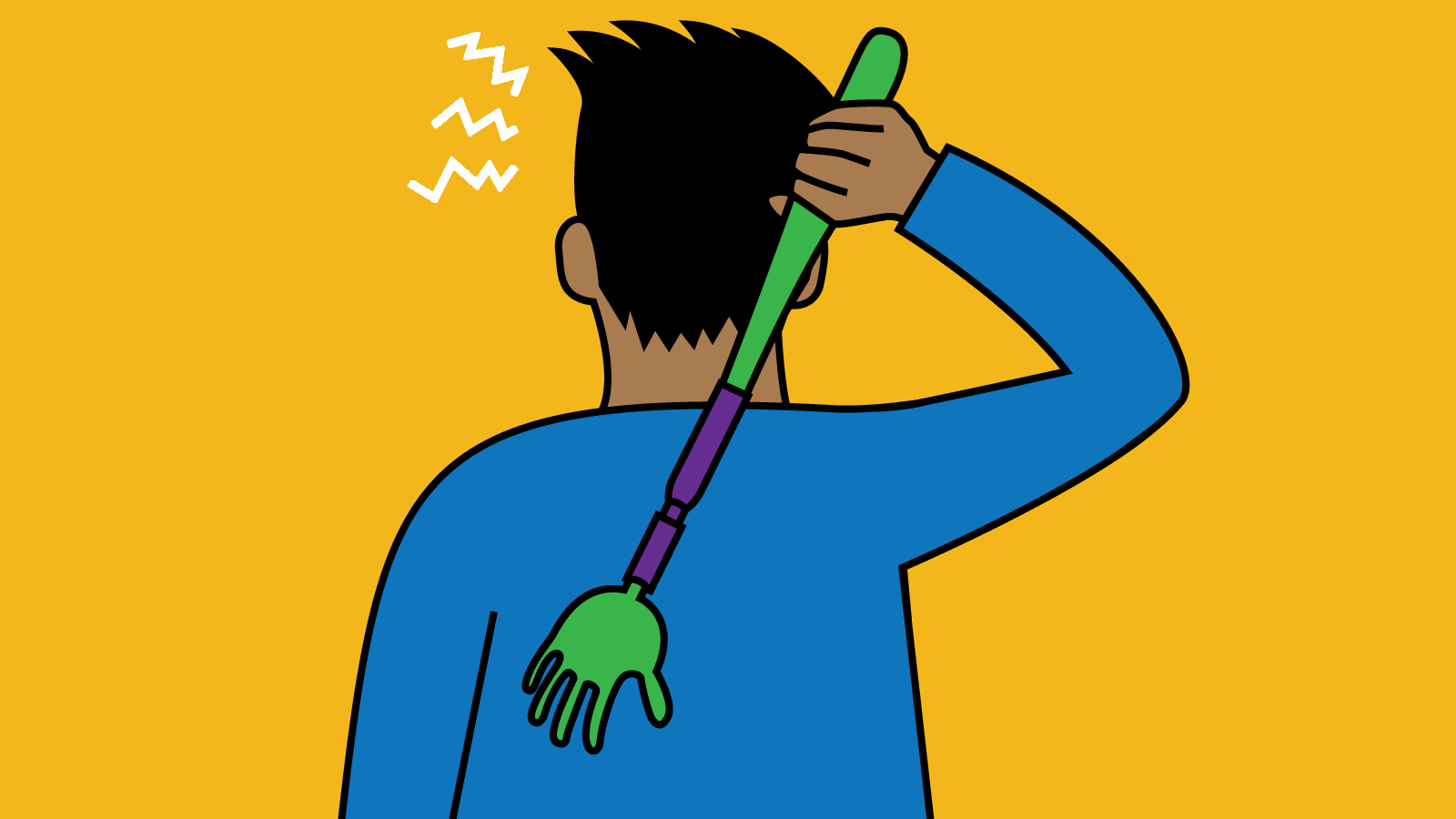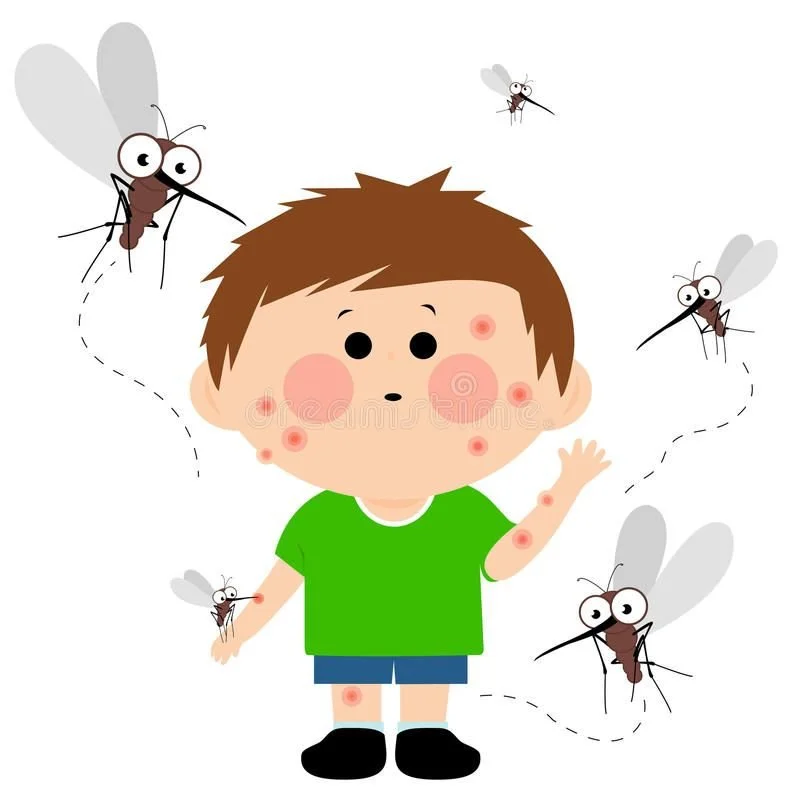UNSCRATCHABLE ITCH (Monday Poem)
by Shel Silverstein
There is a spot that you can't scratch
Right between your shoulder blades,
Like an egg that just won't hatch
Here you set and there it stays.
Turn and squirm and try to reach it,
Twist your neck and bend your back,
Hear your elbows creak and crack,
Stretch your fingers, now you bet it's
Going to reach -- no that won't get it--
Hold your breath and stretch and pray,
Only just an inch away,
Worse than a sunbeam you can't catch
Is that one spot that
You can't scratch.
Soothing Itchy Skin
Imagine a world free of itching, where your skin feels calm and relaxed. Skitch Itch relief balm is here to save the day! Let the soothing sensation take over and say goodbye to irritated skin forever.
Skitch is an all natural blend of the highest quality ingredients formulated to soothe irritated itchy skin. A blend of herbs, minerals, and essential oils work synergistically together to provide a balm that not only soothes but also moisturizes skin.
Why Choose Skitch!
Fast-acting formula to provide instant relief
Made with natural ingredients to nourish your skin
Easy application for on-the-go itch emergencies
Compact size for convenient storage in your bag or pocket
Say goodbye to itchiness and hello to comfort with Skitch! Don't let a little itch ruin your day - grab your own Skitch Itch relief balm now and skitch that itch away!
Skitch! - Because life's too short to be itchy.
So whats in Skitch that makes it so wonderful-
We start by extracting and infusing oils from raw materials: arnica, mugwort, chickweed, plantain, and calendula. These are combined with dry ingredients like colloidal oatmeal, bentonite clay, and zinc oxide. Finally, we add cooling and calming essential oils of peppermint, camphor and menthol for a soothing effect. No synthetic ingredients added.
Arnica-(Arnica Montana) is rich in the phytonutrient helenalin, and it is this potent compound that is responsible for the exceptional healing abilities of this plant. Arnica contains lactones which are naturally anti-inflammatory and can work to bring down swelling and alleviate pain. They inhibit the production of Nuclear Factor Kappa Beta (NF-kβ), a protein complex that plays a key role in regulating the immune system’s response to infection and tissue damage.
Mugwort-(Artemisia Douglasiana) Has potent antioxidant, antibacterial, and antifungal effects.
Chickweed-(Stellaria Media)Chickweed is known as a skin rejuvenator in the world of contemporary herbalism. It has a cooling and drying effect on wounds, bites and minor burns.
With anti-inflammatory, antiseptic and antifungal properties, infusions of Chickweed can be used to treat a number of skin complaints including; boils, sores, rashes, wounds, eczema and psoriasis. It will also relieve the itching and inflammation that accompanies many of these conditions.
Plantain-Applied topically, Plantain is an excellent wound vulnerary with the power to stop bleeding and heal bruises, including puncture wounds, bug bites, bee, wasp, and nettle stings, boils and ulcers. When treating cuts and other open wounds, it not only staunches the bleeding, it also prevents infection by removing dirt, and as an antiseptic it disinfects the wound.
A unique trait that sets Plantain leaf apart from most other tissue-healing plants is its intense drawing ability. It draws out the poison from snake bites, animal bites, insect bites, bee stings, wasp stings and nettle stings.
Finally, this versatile herb contains a compound known as allantoin – a powerful skin soothing agent that encourages cell growth. Plantain can be used to provide natural relief from sunburn, to treat acne and rosacea.
Calendula-(Calendula Officinalis)Calendula’s most popular use from ancient times to modern day has been for healing the skin of wounds, burns, rashes, itchiness, bites and swelling. It has been found that Marigold has the ability to promote the growth of healthy new tissue, increase blood flow to the affected area, boost collagen production (which firms and strengthens skin), hydrate dry skin and speed up the process of skin repair following surgery or damage.
What is Itch?
Itch or medically known as Pruritus is an uncontrollable irritating sensation that creates the urge to scratch.
History of Itch
Historically, early mentioning of itch can be traced back to early Egyptian Medical papyri, in the 16th century BC. and further back to the 18th to 20th century BC in the Veterinary Papyrus Kahun.
Itch as self-punishment was a practice amongst Medieval Christians to inflict harm upon themselves as means of repentance. A cilice (hair shirt) was worn next to the skin to deliberately cause discomfort, like itching.
The discomfort and pain caused by the cilice was considered to be imitating the suffering of Christ, during Lent and the crucifixion, which would help people repent for sins as well as resisting the temptations of the flesh in order to achieve spiritual goals.
It was German physician Samuel Hafenreffer who termed the definition of “itch” in 1660 as “an uncomfortable sensation that provokes the desire to scratch”. Our understanding of Itch has progress very slowly over the centuries since his “discovery”.
Understanding Itch
The desire to itch is thought to be an adaptation defense mechanism against skin irritants, pathogens and parasites.
Until very recently, itch was widely considered to be just a mild form of pain. The two sensations do indeed have much in common, but there are important differences between them. Both are detected and transmitted by peripheral neurons called C-fibers, which have cell bodies located just behind the spinal cord. These cells possess a single, small diameter fiber that splits into two branches soon after emanating from the cell body, with one branch projecting out towards the skin surface, and the other entering the back of the spinal cord, where it connects to a secondary cell that projects up to the brain.
In 1997, a team of researchers in Germany and Sweden reported the discovery of C-fibers in human skin that appeared to be specific for itching, and to respond to histamine, the “classic” itch molecule, with sustained activity.
Fifteen years later, researchers at Johns Hopkins University School of Medicine identified a subpopulation of pain-sensing cells specifically linked to itch, and subsequent research has identified cell surface receptors that are specific for other itch molecules.
The distinction between itch and pain is blurry, however. The discovery of C-fibers activated by histamine suggested that itch has its own dedicated sensory pathway, but itching is often accompanied by painful burning, tingling, or stinging sensations, and itch-sensitive C-fibers (or pruriceptors) also express certain pain-sensing membrane proteins, so some of them may transmit both pain and itch signals. Thus, itch researchers are entertaining two hypotheses, one stating that there are C-fibers dedicated to itch alone, the other that the intensity of C-fiber activity is key, such that weaker or stronger activation of C-fibers causes itch or pain, respectively.
Put simply, you itch because your skin has receptors called pruriceptors (itch-sensing nerve endings) which get stimulated and, in turn, cause that itchy feeling. As part of the immune response, your body releases substances called histamines, triggering the itch.
Causes of Itch
There are several causes that can cause itchy skin they include:
Dermatologic: The itching is the result of inflammation or swelling within your body.
Systemic: The itching is the result of an underlying medical condition that can affect your skin or your internal organs. This could include natural changes to your body with age or hormonal changes, among others.
Neuropathic: Nervous system conditions or nerve damage causes itching.
Psychogenic: Psychiatric conditions or conditions that affect your brain cause itching.
Environmental: An irritant in your environment causes itching. This could be clothing material, an insect bite, a reaction to a drug, temperature or touching something uncomfortable.
Itch scratch cycle
Itch occurs by stimulation of sensory neural fibers in the skin resulting in a signal being sent to the brain that is interpreted as itch, followed by a motor response to scratch such that the stimulus that initiated the cycle is removed.
How to treat Itch
The American Academy of Dermatology (AAD) suggests that a good way to relieve itchy skin is to apply a cold, wet cloth or ice pack to the affected area for 5–10 minutes.
Cooling helps reduce inflammation that may be contributing to the itch.
Another option is to keep moisturizing creams and lotions in the refrigerator. This will ensure they have a direct cooling effect when a person applies them to the skin.
Colloidal oatmeal is finely ground oatmeal that forms a protective barrier on the surface of the skin, which helps to seal in moisture. Colloidal oatmeal can help to relieve dryness and itching.
Colloidal oatmeal also has known antioxidant and anti-inflammatory properties, both of which can help to reduce skin irritation.
Moisturizers, such as creams and lotions, can help hydrate the outermost layer of the skin. They are essential for managing skin conditions that cause itching and dryness.
A good moisturizer will contain humectants and emollients. Humectants draw water into the skin, while emollients form a protective film over the skin’s surface, which helps lock in moisture.
It is best to apply moisturizers soon after a bath or shower while the skin is still a little damp.


